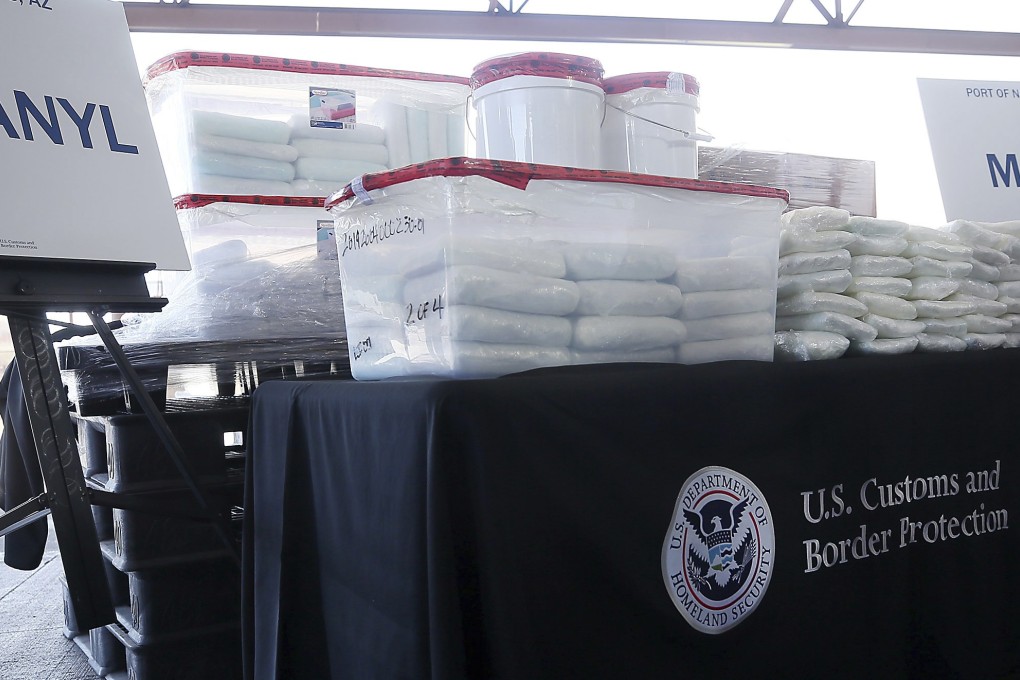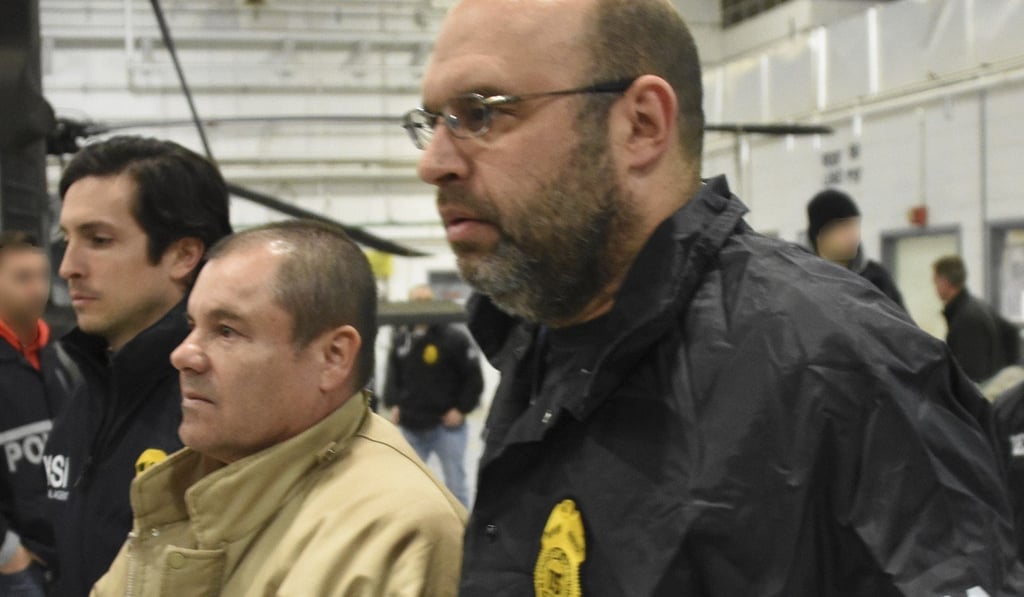Advertisement
Mexican drug lord El Chapo’s in jail, but Chinese fentanyl is still fuelling his Sinaloa cartel’s business
- The convicted drug lord’s business is now run by Ismael ‘El Mayo’ Zambada, and has continued to develop a highly lucrative profit in the trade and use of the synthetic opioid
- But the Mexican government now says there is officially no more narco war, so catching drug lords and cartels is no longer their top priority
Reading Time:4 minutes
Why you can trust SCMP

Despite the arrest, extradition and now conviction of narco-lord Joaquin “El Chapo” Guzman, his Sinaloa cartel marches on – and the proof is in huge, multi-drug shipments detected on the border in recent weeks.
Those heaping bags of fentanyl – sourced in China – and plastic tubs of crystal meth, heroin and cocaine offer no sign that the cartel has been weakened, lost sway over its traditional territory in northwesters Mexico or seen its international reach curtailed by the loss of its notorious leader.
“It’s still a major, major force in the Mexican criminal underworld,” Mexican security analyst Alejandro Hope said.
Advertisement
The cartel still controls a global web of contacts that can move Colombian cocaine to Cameroon and Mexican meth cooks to Malaysia. It also controls seaports to get drugs and precursor chemicals shipped in from around the globe; employs labs and chemists to process them; bribes corrupt police to ensure the drugs can be moved to the border; has engineered multimillion-dollar tunnels to smuggle tons of marijuana and cocaine under the frontier; and pays “mules” to ferry shipments in cars and trucks.

Advertisement
That does not even count the armies of hitmen and enforcers who moonlight in extortion and kidnapping, plus the money launderers, front corporations and political contacts. There’s also a world of professionals such as architects, jewellers and even musical groups, who provide entertainment and launder money.
Advertisement
Select Voice
Choose your listening speed
Get through articles 2x faster
1.25x
250 WPM
Slow
Average
Fast
1.25x